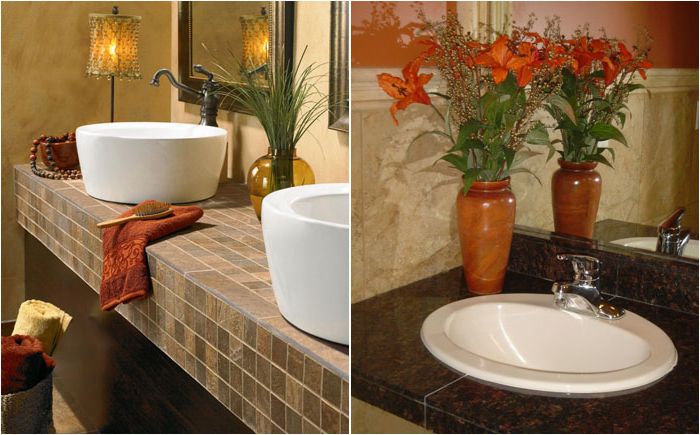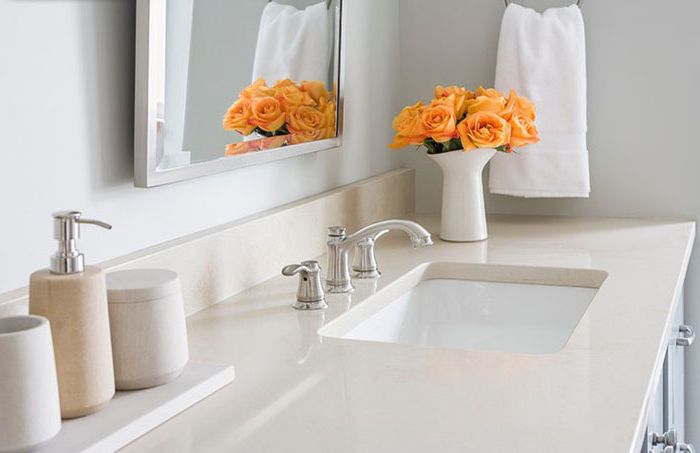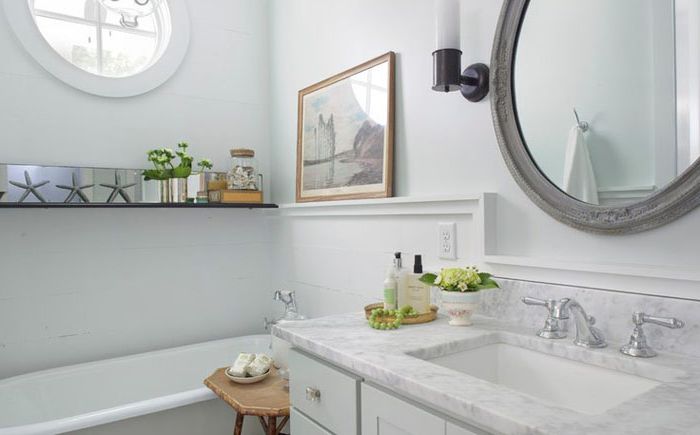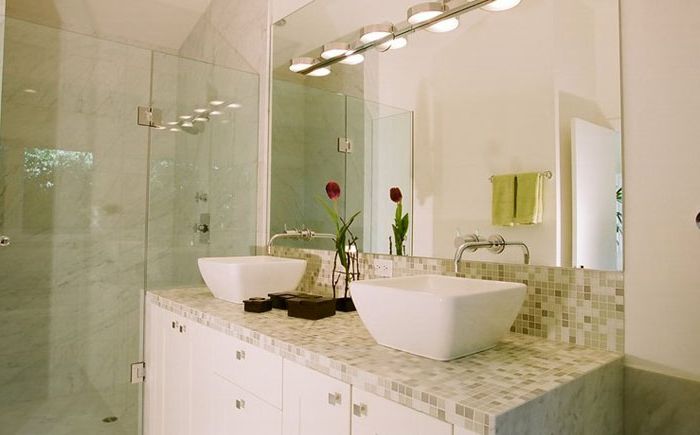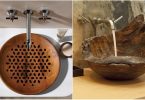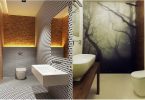How to choose a bathroom countertop: the pros and cons of the most popular materials
The choice of a worktop material with excellent performance for the bathroom is fraught with difficulties, although they are all presented in approximately the same price range. The functions of the countertop in the bathroom and in the kitchen are slightly different, it does not deal with hot pots, sharp objects, so the choice is determined more by style and cost than strength and durability. We offer an overview of the most popular countertops, their advantages and disadvantages.
Granite
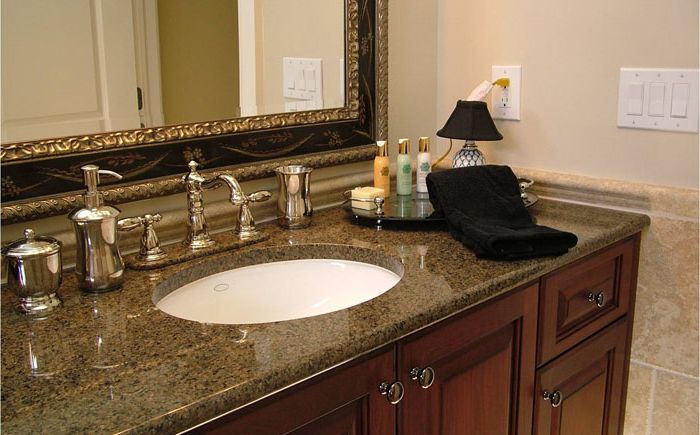
Granite countertop
Granite surfaces can only compete with quartz in demand. It is chosen for its naturalness, beautiful pattern and variety of colors..
Advantages:
• A wide range of patterns, from washed out to bright, and colors.
• It is a durable stone that is scratch resistant and easy to use.
• It is immune to moisture and hot influences.
• The stone is almost eternal.
Disadvantages:
• This is one of the most expensive materials.
• Heavy weight.
• It can be damaged if installed incorrectly.
• It requires expensive energy costs in its extraction, transportation and processing
Quartz
Quartz countertop
Quartz is a durable natural material; in fact, any stone contains a certain percentage of quartz in its composition. Quartz surface manufacturers, among which Caesarstone, Cambria, Zodiaq and Silestone are considered the most popular, use dyes and pigments, resins, etc. to change its color..
Advantages:
• Quartz is stronger than granite and does not require filling.
• The stone is resistant to moisture, stains and bacteria.
• Quartz surfaces can acquire specified shapes and withstand any transformations.
Disadvantages:
• The price is almost commensurate with the cost of marble and granite.
• Sanding and texture treatments can leave finger marks and stains on the quartz surface and therefore requires regular maintenance.
Acrylic
Acrylic table top
Leading manufacturers Corian, Gibraltar, Formica Solid Surfacing and Staron. These surfaces are presented in a variety of colors, the pattern is hardly noticeable, so they are especially suitable for any style..
Advantages:
• Durable, resistant to water, bacteria and stains.
• Due to imitation of realistic patterns, it can compete with natural stones.
• Solidity.
• Possibility to cover up minimal damage by grinding.
• Models with built-in sinks and apron available.
• Compatibility with other decorative elements, regardless of color and lighting.
Disadvantages:
• Damage on dark colored surfaces can be seen more clearly.
• Prone to damage from high temperatures, may crack on impact.
Marble
Marble countertop
For centuries, elegant marble has been synonymous with wealth and privilege. Today this stone has become more affordable. In most cases it is white with gray veins, although there are other colors..
Advantages:
• Strong and durable material.
• Amenable to grinding and other types of processing.
• Harmonizes with any style.
Disadvantages:
• High cost.
• Tendency to stains, cracks. Acid susceptibility.
• The need for filling from time to time.
Concrete
Concrete countertop
It would seem that concrete is a building material, but it is also successfully used in interior design, as it is capable of acquiring specified shapes. Most concrete countertops are formed on site for maximum quality control.
Advantages:
• Organic material that imitates natural stone.
• Wide variety of colors, textures and decor.
• Ability to acquire given shapes, levels and compliance with different styles.
• Durability.
• Environmentally friendly material and can also be made from recycled material.
Disadvantages:
• Regular surface treatment by sanding or waxing.
• Visible seam lines that are masked with color filler.
Laminate
Laminate worktop
Laminate flooring has undergone many changes since the 60s and 70s when it first appeared. This is an easy-to-use material consisting of thin layers of plastic, which is glued under pressure to chipboard or plywood. Modern technologies provide customers with a wide selection of prints for the texture of wood, graphite, etc..
Advantages:
• One of the most affordable materials for making countertops.
• Durable, resistant to moisture, easy to clean.
• Wide choose
• Easy to install without professional assistance.
Disadvantages:
• Over time, the material thins and fades.
• Damage cannot be restored; you will have to completely change the entire surface.
Tile
Tile countertop
Ceramic tiles can be a charming and simple material. It is actively used in designs in the Spanish colonial style, in the design of beach houses and bathrooms. Tiles in a variety of colors are the ideal material for beautiful protective panels for countertops and sanitary ware.
Advantages:
• The glazed surface of the tile is resistant to high temperatures, stains, scratches and moisture.
• Availability.
• Damaged tiles can be replaced fragmentarily.
• Tiles do not require professional installation services and can be made to order.
Disadvantages:
• Seams can build up dirt and mold, which is difficult to deal with.
• Tiles can crack and split.
The kitchen has its own requirements for worktops that are quite high and tough, nevertheless, a review of the ten most popular materials for them proves that everyone can choose something to their liking..

